A prairie dog is a burrowing mammal. It is known for being a keystone species or one that has a huge impact on its environment. There are five species of prairie dogs: the black-tailed prairie dog, the white-tailed prairie dog, the Gunnison’s prairie dog, the Utah prairie dog, and the Mexican prairie dog. Prairie dogs live in grassy plains and prairies, and some of the species of prairie dogs can even be classified based on their habitat.
Check out these 10 interesting prairie dog facts that will fascinate you!
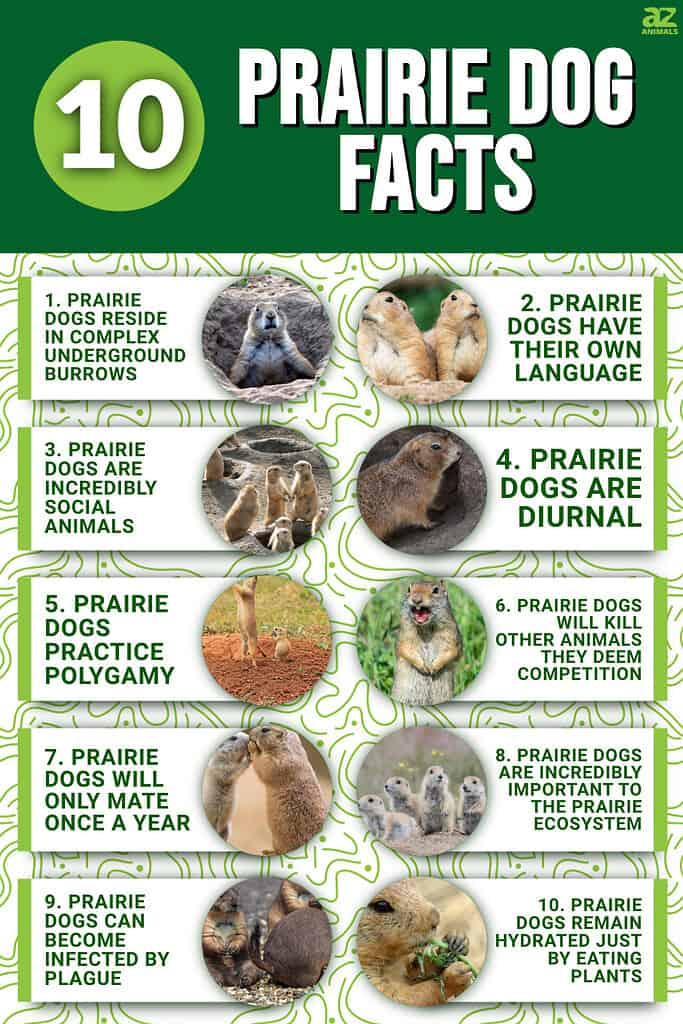
1. Prairie Dogs Reside In Complex Underground Burrows

Prairie dogs dig complex tunnel networks as shelter.
©iStock.com/Jon Marshall
It’s easy to see how well-organized prairie dogs can be just by looking at their homes! Their underground burrows consist of an incredibly detailed and complex system of tunnels. Each tunnel has its own designated purpose. The tunnels are all built with a specific purpose in mind, from nurseries to sleeping rooms to toilets. Some prairie dogs even build listening posts in their tunnels to keep track of predators! Burrow tunnels are also designed to provide ventilation by allowing air to flow.
2. Prairie Dogs Have Their Own Language
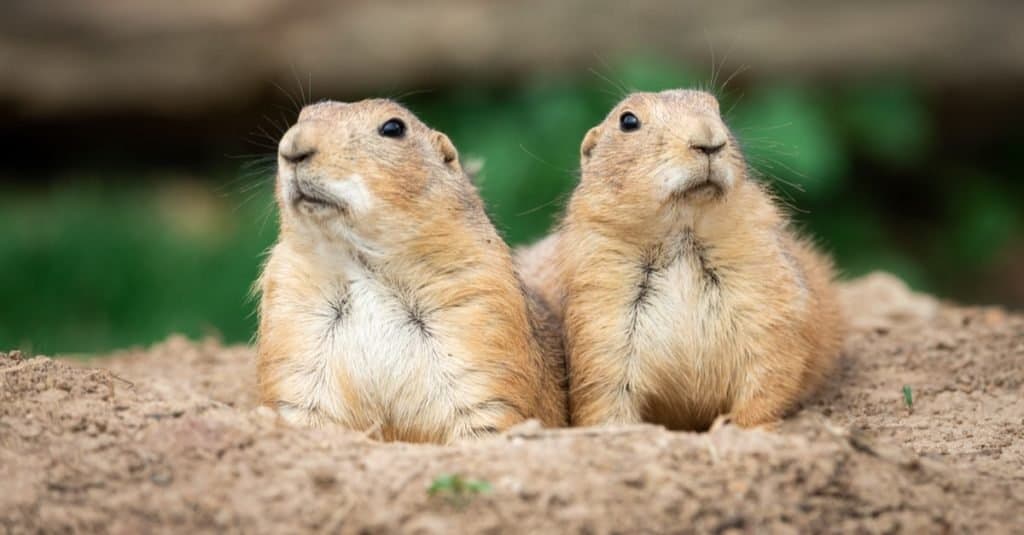
Their vocabulary is more advanced than any other animal language that’s been decoded.
©AB Photographie/Shutterstock.com
One of the main reasons the prairie dog is called a dog is because of its highly intricate vocal noises that resemble a dog’s bark. A study published in the journal Observations on the Biology of Gunnison’s Prairie Dog in Central Colorado concluded that prairie dogs possess some of the most complex communication systems and social structures of any animal. Prairie dogs are said to have more complex vocalizations than dolphins and monkeys. Different chirps are used to communicate not only when a predator is nearby but also its color, size, and speed. The prairie dog community relies on these chirps to stay safe and to look out for each other.
3. Prairie Dogs Are Incredibly Social Animals
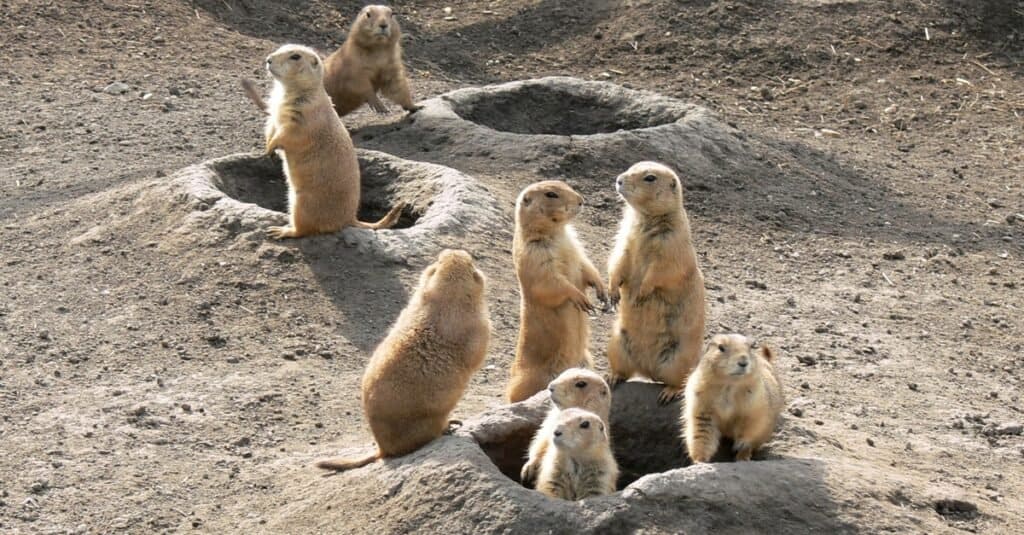
The prairie dog is a highly social animal at every stage of its life.
©Zoltan Tarlacz/Shutterstock.com
Prairie dogs live in colonies that serve as little towns. They live in family groups called coteries, which typically consist of one male, two to three females, and their young. The towns in which they live house multiple families and can extend incredibly far throughout the land. What’s also amazing to note is that when groups of prairie dog members from the town meet, they’ll give each other what looks like a “kiss” and will choose to nuzzle. Together, the community shares food, grooms one another, and protects one another.
4. Prairie Dogs Are Diurnal

Due to prairie dogs’ extremely poor night vision, it is extremely important that they remain in their burrows at night.
©RMMPPhotography/Shutterstock.com
Prairie dogs are diurnal, meaning they remain active throughout the day and sleep at night, like humans. During the day, prairie dogs get everything they need to be done, rarely coming out of their burrows during the day except for special occasions. Due to prairie dogs’ extremely poor night vision, it is extremely important that they remain in their burrows at night. Otherwise, they may encounter dangerous predators.
You may be surprised by the next prairie dog fact about their mating rituals!
5. Prairie Dogs Practice Polygamy
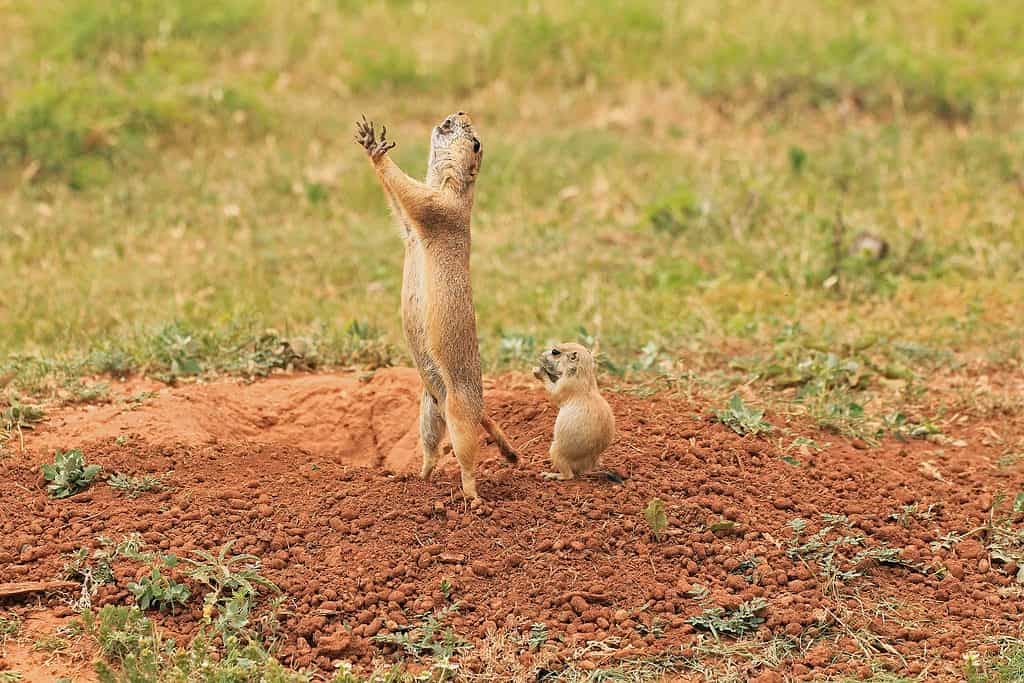
It is not uncommon for female prairie dogs to mate with multiple males to increase their chances of reproducing.
©Warren Price Photography/Shutterstock.com
Male prairie dogs are likely to be polygamous. As a result, one male may reproduce with multiple females in his clan. Prairie dogs usually have one dominant male and 2 to 3 females responsible for watching over and taking care of their young. It is not uncommon for female prairie dogs to mate with multiple males to increase their chances of reproducing.
6. Prairie Dogs Will Kill Other Animals They Deem Competition
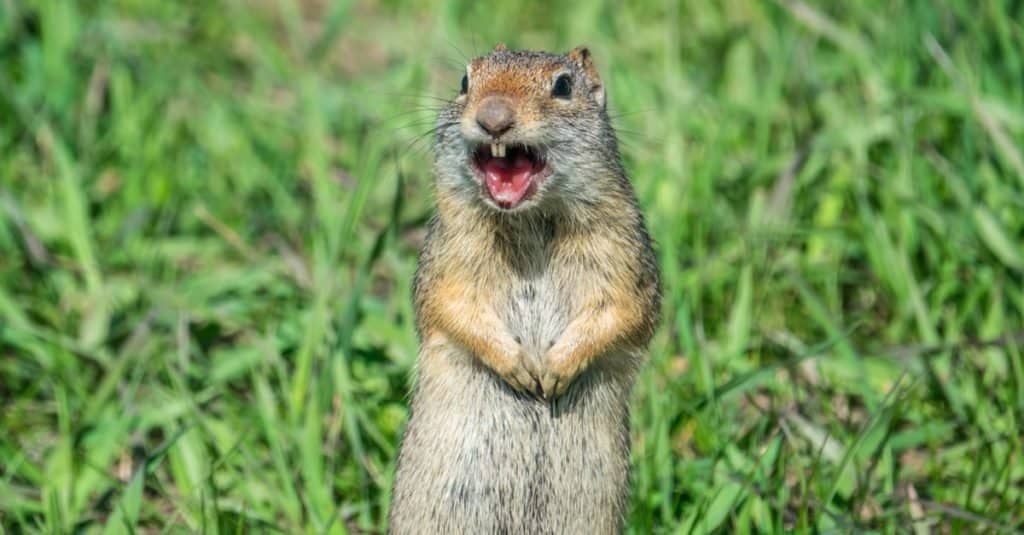
Prairie dog barking an alert
©fluidmediafactory/Shutterstock.com
The prairie dog is a herbivore, meaning its diet consists of plants and leaves. However, they will kill any animal that competes with them for food, even if they do not kill animals to eat. There can be a lot of territorial behavior among prairie dogs, and they will go to great lengths to protect their territory. They tend to kill squirrels in their area and discard their carcasses as soon as they are done. In rare cases, they may even choose to eat small amounts of what they’ve killed.
7. Prairie Dogs Will Only Mate Once A Year

Prairie dog mothers are responsible for protecting their nests and nursing their young.
©Nick Fox/Shutterstock.com
A prairie dog’s life is heavily influenced by its mating season. Prairie dogs mate between March and April, but their period of breeding only lasts for two to three weeks. After mating, a female prairie dog will have about 3 to 4 pups. These pups are born completely hairless and blind and will stay in their burrows for up to 6 weeks. Female prairie dogs are extremely protective of their young and become aggressive if they feel their pups are in any way threatened.
8. Prairie Dogs Are Incredibly Important To The Prairie Ecosystem
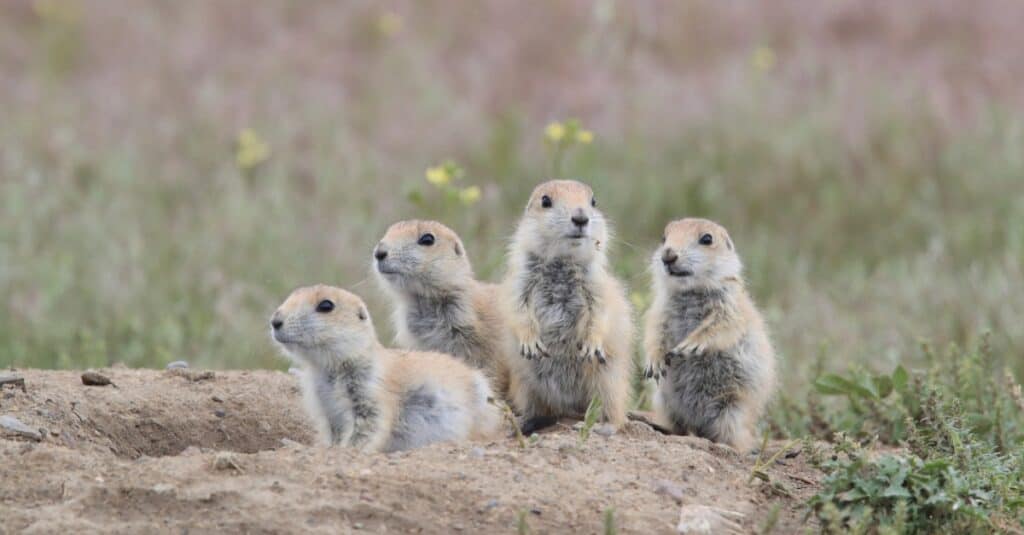
The loss of prairie dogs would contribute to the collapse of some ecosystems and the death of many other animals and plants.
©Frank Fichtmueller/Shutterstock.com
Another fun prairie dog fact is that they play an important role in maintaining the ecosystem since they are keystone species. In addition to aerating soil, prairie dogs also produce nitrogen in their stool that acts as their own fertilizer. Because of all they do, there is more vegetation that many other animals rely on. The loss of prairie dogs would contribute to the collapse of some ecosystems and the death of many other animals and plants.
9. Prairie Dogs Can Become Infected By Plague
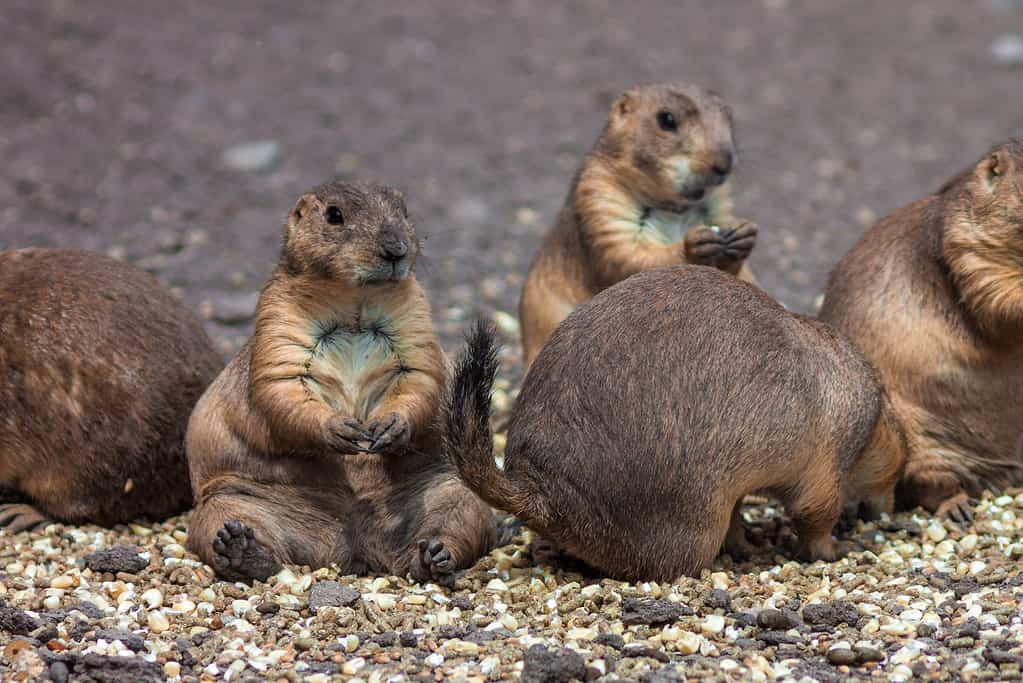
Once infected by a plague, prairie dogs can die within 3 days and can wipe out a whole colony if they too become infected.
©Alberto Cavazos/Shutterstock.com
Prairie dogs are susceptible to plague due to fleas that live on them, just like many other rodent species. Once infected by a plague, prairie dogs can die within 3 days and can wipe out a whole colony if they too become infected. Prairie dogs may transmit this disease to humans too, but this rarely occurs because prairie dogs are very afraid of humans and never come into contact with them.
10. Prairie Dogs Remain Hydrated Just By Eating Plants
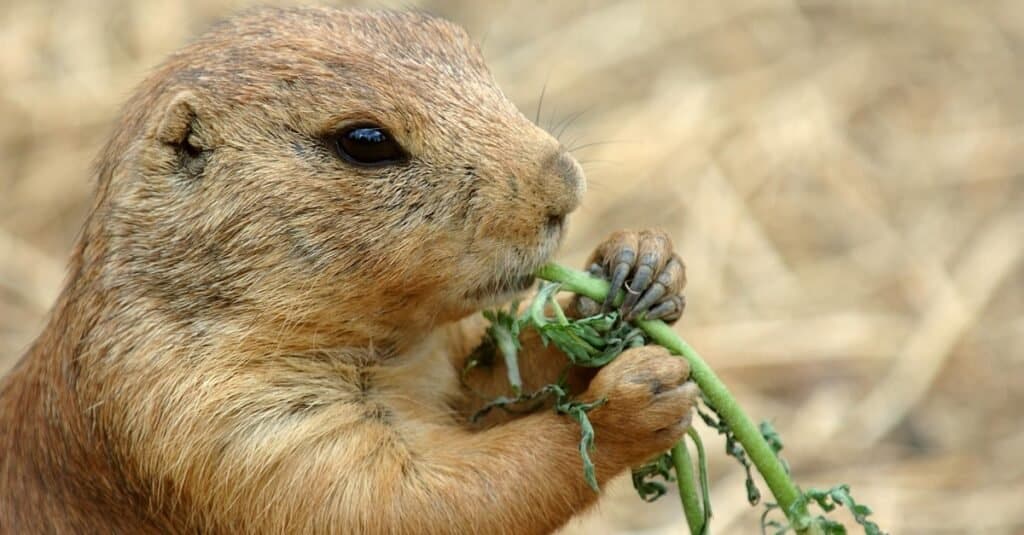
Prairie dogs live in very arid environments with little rainfall, and therefore mostly get hydration from the plants they eat.
©Geoffrey Kuchera/Shutterstock.com
Prairie dogs typically live in areas that receive little to no rain on a regular basis. Since they are herbivores, they will use plants such as cacti, roots, and grass to help stay hydrated. As a result of their herbivorous diet, they can retain any moisture they require, so they do not need to drink water.
The photo featured at the top of this post is © AB Photographie/Shutterstock.com
Thank you for reading! Have some feedback for us? Contact the AZ Animals editorial team.






